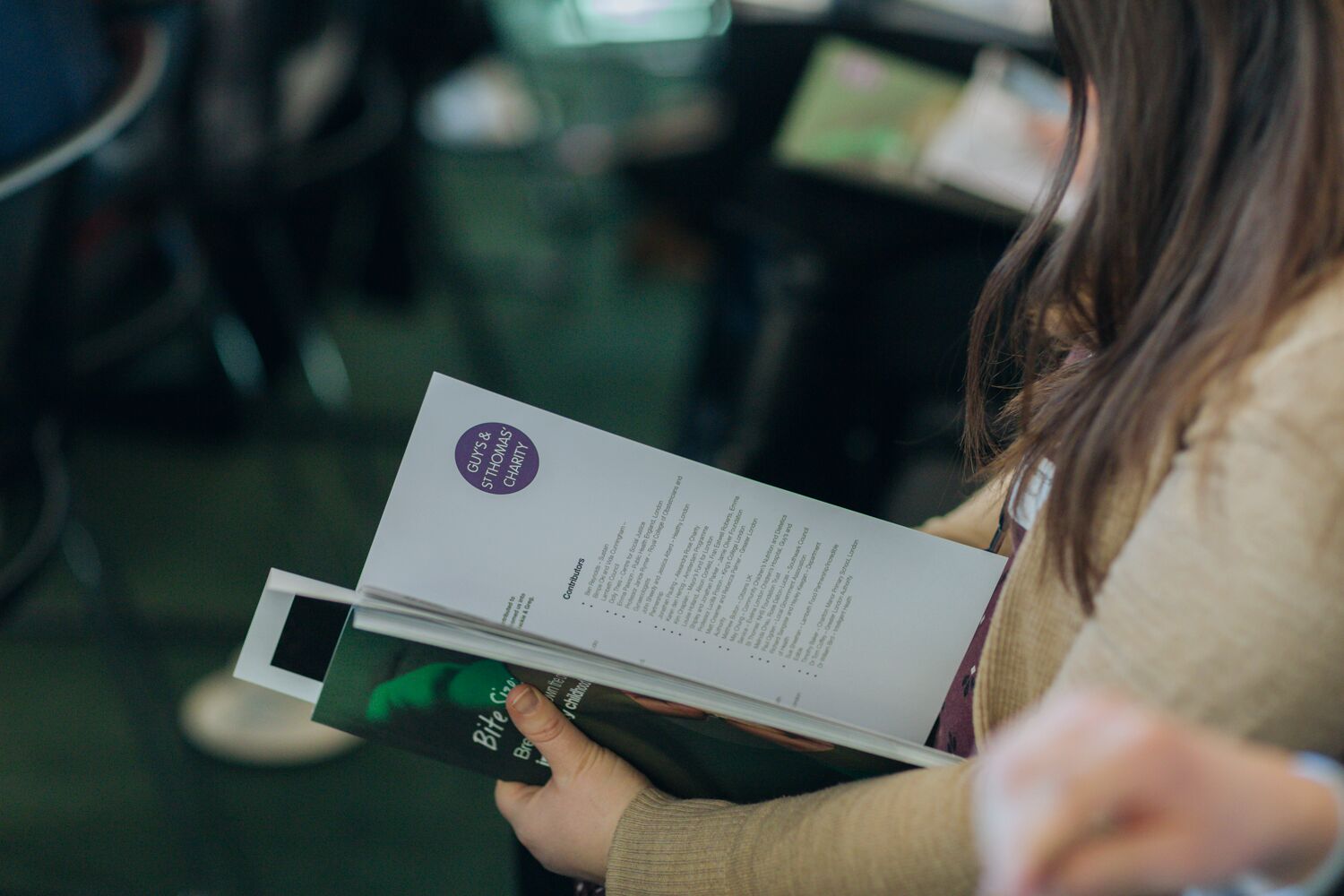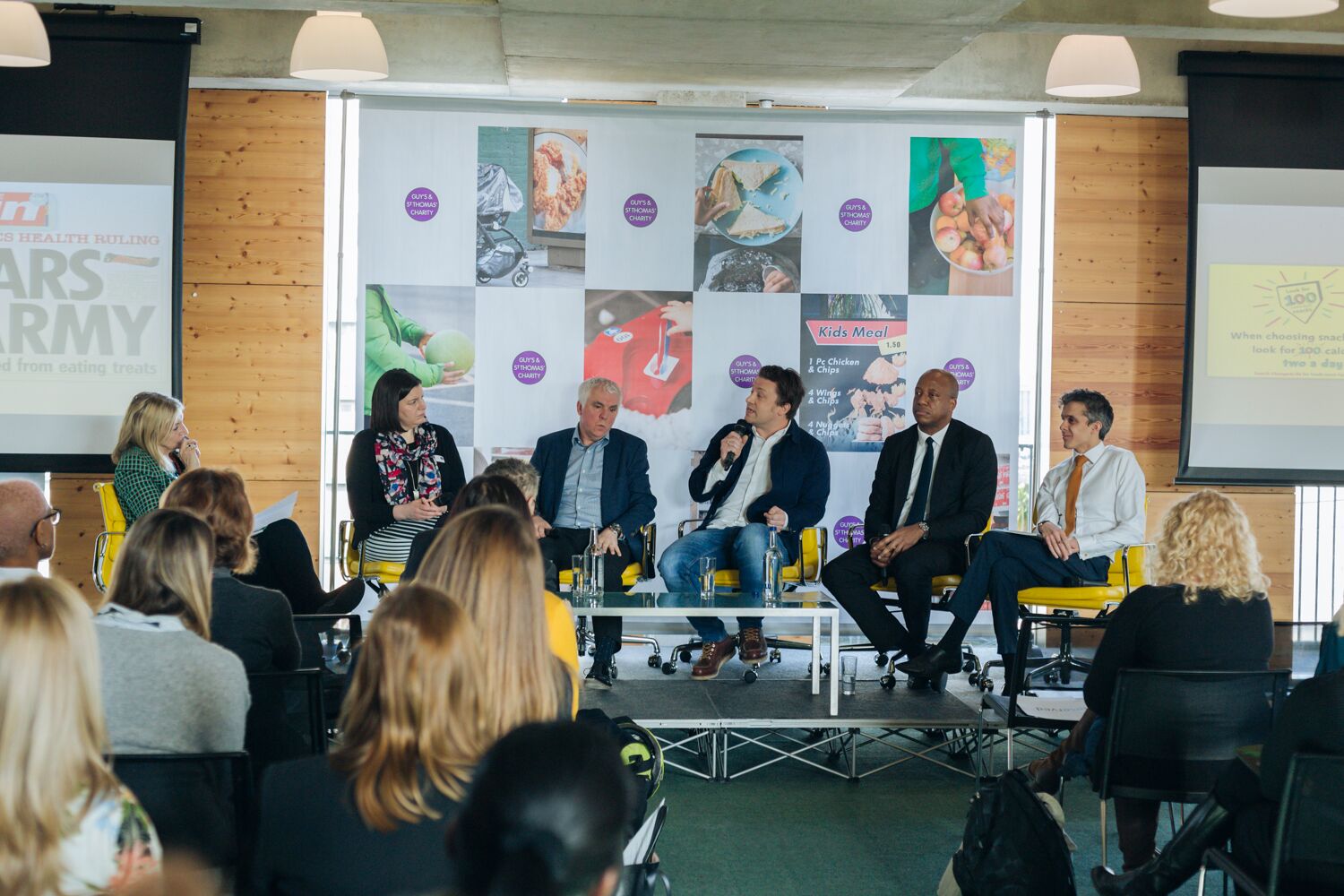This week saw the launch of Guy’s and St Thomas’ Charity’s report; ‘Bite Size: Breaking down the challenge of inner-city childhood obesity.’ Rising childhood obesity is often seen as a classic wicked issue, rising inexorably around the world year after year. It also varies by geographical area and social class, cruelly concentrated in the most disadvantaged areas and populations – a hollow irony for a so-called ‘disease of affluence’.
The complexity of the causes of obesity, famously captured in the Foresight map, has led many to give up on solutions. But not the panelists and participants at this event. We think that we can, and will, turn around the obesity juggernaut in the coming years.

How could a hospital charity, and a small band of campaigners, researchers, public servants and interested members of the public turn a tide that has risen so unstoppably for decades? Well first of all, Guy’s and Thomas’ is no ordinary charity. As Chief Executive Kieron Boyle noted, it has been around for more than 500 years. That gives it a very different perspective on timeframes. It is focused on just two London Boroughs, a microcosm of both the wealth and disadvantage of the modern industrialised world, which also means that its per capita spending might be the highest of any European charity. As a result, it may be able to focus efforts enough to make greater progress on the issue than others.
But what solutions should the programme focus on? The new report, which BIT contributed to, stresses that most of our daily decisions are automatic. Deciding what we eat, whether that quick pre-meeting lunch or late supper, are classic examples of this automatic or “fast” thinking. This means that the environments in which we shop and eat affect our choices. This is both a challenge and an opportunity. A challenge because people are influenced by promotions and offers for less healthy options, and are even unaware of how much they are eating. However, it is also an opportunity, since positive changes to the environment can encourage healthier choices.

Another priority is to consider how obesity is “framed”. Obesity is often seen as reflecting a lack of willpower and knowledge – in conventional surveys and some political debates, this is still often the first take on the issue. Framing the problem like this leads to solutions based on providing information and education to parents and children, when evidence suggests these approaches generally don’t work and are even less effective among lower income households.
With many families suffering from a lack of time, money and headspace, the ineffectiveness of effortful interventions is hardly surprising. Perhaps the most important message in the report is that we must make healthier choices as easy as possible for children and their parents.
At the national level, policies such as the soft drinks levy demonstrate that manufacturers can be encouraged to put healthier products in our stores. Even though the tax has yet to come in, we have already seen massive sugar level reductions in many drinks, as manufactures have reformulated to get their products below the tax threshold. We shouldn’t be shy in giving credit to those in the industry who have responded and taken a lead, such as Lucozade and Tesco, with Tim Smith of the latter setting out at the launch event how they had now reformulated around 150 products from across four major suppliers in just six months.
But as Vicki Purewal (Healthy Streets campaign), Kevin Fenton (previously Public Health England, and now Southwark Council), and others pointed out, we need to twin national with local action. Liz Robinson, head of Surrey Square Primary School, talked about how they were seeking to build healthier habits and eating into school life. Jonathan Pauling, of the Alexandra Rose Charity, explained how they were using free fruit and vouchers, not just to boost healthier consumption in low income groups, but to boost local fresh food markets close to where people live.
We particularly need to test and refine interventions that do more than temporarily shift the behaviour of a few individuals. The goal is to move underlying equilibrium, or the current against which many people find themselves swimming in everyday life. It’s hard to resist temptation once you are in the supermarket or walking down the street back from school, confronted by an endless stream of unhealthy choices. Much better to focus on tilting that environment.
Where is the ‘TripAdvisor’-style rating that can advise a busy parent which of several local supermarkets has its promotions and end of aisles focused on healthier, good value options? Where are the simple gold-silver-bronze ratings that allow parents (and Ofsted inspectors) to encourage schools to promote healthier lifestyles? Where are the signs outside restaurants, and the options on menus, that signal ‘live well’ choices? (Recognising that calling something ‘healthy’ will generally not be the best way of getting a teenager to choose it.)

It’s a really exciting prospect: a top hospital charitable trust using its resources, and the scientific rigour more generally associated with medicine, to promote health and well-being in our kids rather than waiting for them to be patients a decade or two later. They are also showing the nerve to innovate – some of the approaches they test may not work.
Jamie Oliver shared the moment, from when he was speaking at the World Health Organisation, of how a spontaneous cheer and applause ran through the audience at news of the UK added sugar drinks levy. The success of that measure shows that it is possible to do something about the environment that shapes obesity – an environment our kids did not choose. If we can have a similar impact at a local level, we have every reason to be optimistic about the future.




